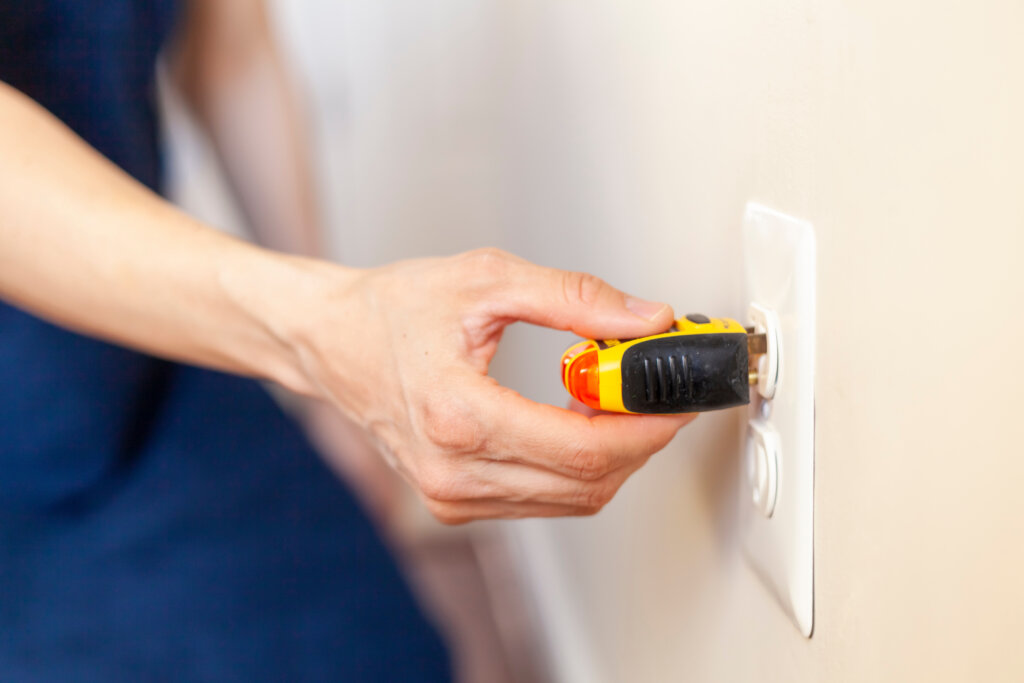As technology races ahead and the number of gadgets and electronic devices at home increases, the ability of the electrical system to keep up is strained. Old homes, in particular, may have extension cords and power strips plugged into outlets in every room. Outdated and strained systems could develop the following electrical issues.
- Overlamping
Overlamping is when a fixture has a light bulb with a higher wattage than the fixture is designed for. This is an electrical hazard that could scorch or melt the socket and insulation on the fixture’s wires, increasing the risk of arcing. It’s important to stay within the wattage limit on all light fixtures and use only 60-watt bulbs or smaller for older, unmarked fixtures.
- Uncovered junction boxes
A junction box houses wiring that could be damaged or deliver an electrical shock if uncovered. Purchase a new cover at your local hardware store and screw it on.
- Flickering lights
If lights are flickering during windy weather, the cause could be frayed wiring in the weatherhead, which is the outdoor fitting where overhead cables from the power line enter the home. The frayed wiring may cause a short every time the cable moves, increasing the risk of an arc and electrical fire. To address this issue, contact the electrical utility company to have the weatherhead replaced at no charge to you.
- Insufficient outlets
If you find yourself relying on extension cords and power strips to power your gadgets and appliances, you may need to add more outlets. A licensed electrician will need to cut holes in walls and ceilings to snake the wires.
- Lack of GFCIs
Ground fault circuit interrupters reduce the risk of electrocution in areas exposed to water, such as bathrooms and kitchens by shutting down circuits within four milliseconds of contact with water. You’ll need to replace old receptacles with GFCIs.
- Overwired panel
An overwired panel has too many circuits than it can handle because single-pole breakers have been replaced with tandem breakers in one slot. To address this, add a subpanel or replace the existing panel with a larger model.
- Aluminum wiring
Aluminum wiring was used in the 1960s’ and ‘70s as a cheap substitute for copper. Because aluminum corrodes when in contact with copper, connections can loosen and increase the risk of arcing and electrical fires. To eliminate the risk, retrofit a dielectric wire nut approved for aluminum wire onto each copper/aluminum connection in light fixtures.

